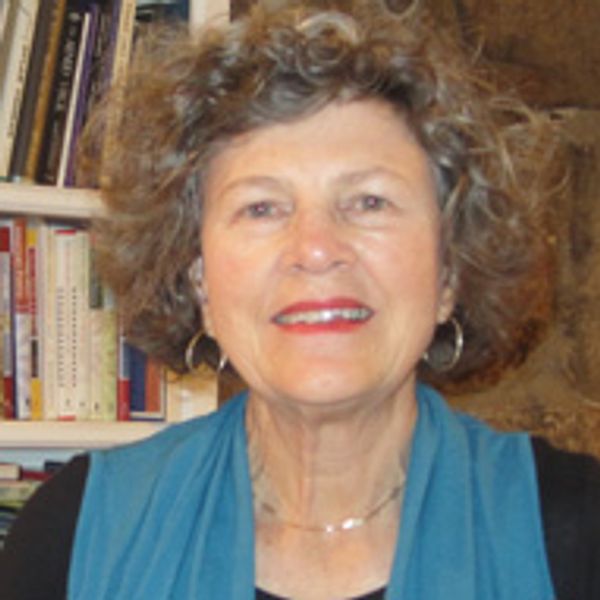Lia Purpura, Decaying Wood (detail), featured in AGNI 102
Coogee to Bronte Walk
My favorite translation of coogee, which is said to have come from the Bidigal word koo-jah, is the smell of seaweed drying. There are other Aboriginal translations, too, mainly about smell or seaweed, but the general consensus is that, nowadays, no one really knows the meaning of coogee. The Aborigines, who used to live in the area in the 18th century, have all gone, driven out by white man’s plans and diseases, well before we understood how precious indigenous knowledge could be.
Coogee is the Australian beach, about thirty minutes from downtown Sydney, where I spend my American winters in an apartment high above the cliffs, hoping to write about something that will be as important to you as it is to me. At the beginning, I say to myself, you have three months, hop to it. Most days I walk towards Bondi, about ten miles further north, past Clovelly to Bronte, and Tamarama, all patrolled by lifeguards, each unique in its own right. I keep an eye out for whales and dolphins, water rips and cloud patterns. I admire the skills of surfboarders and let my mind wander as it wants. I don’t listen to anything except the sea and snatches of conversation of passers-by. Because I wear hearing aids and lip-read this can be either extremely funny or totally frustrating.
In June 2016 the (almost new) two million dollar elevated boardwalk between Clovelly and Bronte was disabled in a storm and has been closed to the public ever since. It was built to keep walkers and joggers from taking short cuts through the nearby cemetery. Plans for its restoration are scheduled and will take nine to twelve months to complete. Meanwhile, there is no avoiding it, one has to take a detour through the cemetery, often claimed to be one of the world’s most beautiful. Anyone can see why—the view is mindboggling—on my right, ocean of the deepest blue, rolling surf, skimming the rocks or smashing against limestone cliffs and a sky that expands to the horizon, conveying a troupe of ever-changing clouds. To my left, elegant crypts and memorials, many of which are of Edwardian or Victorian design, cascade down the hillside toward the sea. Forty one acres of stone and marble, intersected by seams of grass, take your breath away. An eye feast in any direction, but, of course, the dead cannot share in any of it.
I’m a sucker for cemeteries, and even more so now, as I take the detour and reacquaint myself with poets who lie there. I long ago came across Dorothea Mackellar, the poet who shares a plot and plaque with her brother, Major Mackellar. One would expect that the most famous lines from one of her poems, “My Country,” might be inscribed on the white marble.
I love a sunburned country, a land of sweeping plains
Of rugged mountain ranges, of drought and flooding rains.
But no, her name lies beneath her brother’s. She is not identified as a poet, and there is no reference to the poem that all Australian school children learn, which brings to the heart an identical sentimental lurch as the words of Samuel Francis Smith
_My country tis of thee
_ Sweet Land of liberty
Of thee I sing
The cemetery has been the location of many movies and television programs, and eleven American Civil War veterans are buried here. I don’t know why; maybe there’s a story there. I imagine they came in search of gold, which was discovered in the 1800s. Henry Kendall, who wrote poems about the bush and nature has an appropriate memorial, but Henry Lawson’s grave is low key. Still, the words Australian Poet and Story Writer are inscribed on a plaque above his ledger. He died a poor man but eventually the city recognized him with a bronze statue of himself with a swagman and dog. Today, Lawson is regarded as the most outstanding of Australian colonial writers. I checked out his stories, which he calls sketches. He claimed that sketches were the best way of telling a story. Yes, they’re short.
I don’t always continue to Bondi. That’s a story of itself. I turn back at Bronte, which is disappointingly named for Duke of Bronte, a foreign war hero, and not the Bronte sisters. Usually my walk inspires me to head to my desk and not the cookie jar, to make some sense of an overheard conversation or to work on a poem. A new idea can spring from the unshackled mind. That’s the plan.

Judy Rowley
Judy Rowley hears with hearing aids assisted by lip-reading. “Light” is the fifth essay of a memoir series. She lives in Connecticut, USA, but often visits Sydney, where she was born. (updated 5/2014)
